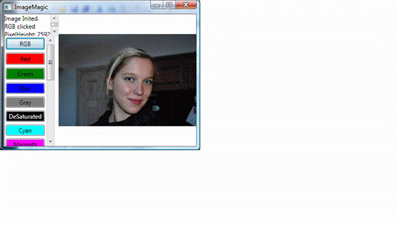

#Imagemagic current comfig how to#
The first example shows how to find ImageMagick and call it to convert a sequence of images (generated by R) to a GIF animation: # find the bin path of ImageMagick Step 4: Run Lyx again and open the file containing eps figures should display png figures in preview. Go to Lyx>Preferences>Paths>Path prefix add :/opt/ImageMagick/bin to the end of the paths.
#Imagemagic current comfig mac os#
Such as /opt/ImageMagick/bin (for Mac OS X). Make sure you are using Windows and have already installed ImageMagick and OpenBUGS. Step 3: Add the path where the convert command is located to Lyx. Here I show two examples for ImageMagick and OpenBUGS respectively. There is no guarantee for this approach to work on any Windows platforms, but I think this is better than explaining what is the PATH variable to some Windows users… Examples > r = names(readRegistry("Software\\Microsoft\\Windows\\ShellNoRoam\\MUICache", It runs on Linux, Windows, Mac Os X, iOS, Android OS, and others. "C:\\Program Files\\ImageMagick\\modules\\filters" The current release is the ImageMagick 7.0.11 series. "C:\\Program Files\\ImageMagick\\config" 1 I have installed imagick on my amazon lightsail lamp instance like so: apt-get install imagemagick apt-get install php5-imagick Unfortunately craft tells me that the ImageMagick extension has Passed with warnings.

"C:\\Program Files\\ImageMagick\\modules\\coders" > readRegistry("SOFTWARE\\ImageMagick\\Current") # I used this trick in the function saveMovie (the animation package) The R function is readRegistry(): # ImageMagick: However, we may be able to find the paths through the registry if the installation will save the path info in the registry hive. More after jump Continue reading below Meet Smashing Email Newsletter with useful tips on front-end, design & UX. Usually this problem does not exist under Linux, because the executables (or their symbolic links) are often put in the directories which are in the environment variable PATH (e.g. In this article, we’ll see how we can use ImageMagick an open-source command-line graphics editor to quickly resize your images, while maintaining great visual quality and really tiny file sizes. For instance, we may want to know where ImageMagick is installed, as we need the convert ( convert.exe) utility to convert images to other formats, or where OpenBUGS is installed because we need this path to use the function bugs(). For example, if you have a custom policy. You can override the defaults set by Platform.sh by providing one or more of these files and placing them in a custom path stored in MAGICKCONFIGUREPATH variable. These are defined in configuration files listed here. When we want to call external programs in R under Windows, we often need to know the paths of these programs. Say you want to support large images or different image formats. Looking for Software Paths in Windows Registry Looking for Software Paths in Windows Registry - Yihui Xie | 谢益辉


 0 kommentar(er)
0 kommentar(er)
